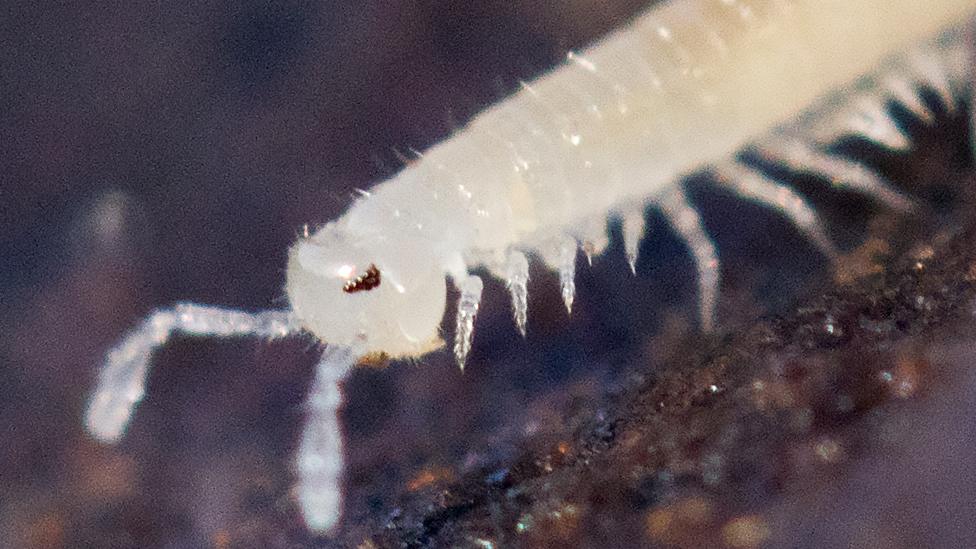Bees: It's not all about honey for Wales' 180 varieties
- Published
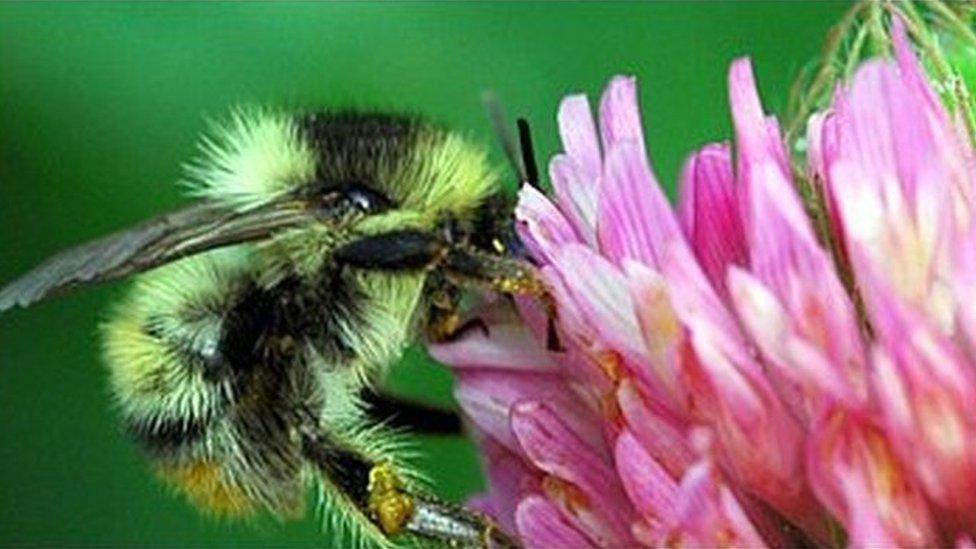
A rejected relief road would have gone through an important habitat for the shrill carder bee
Could you tell a nomad bee from a blood bee or sharp-tail bee?
Honey bees grab most of the limelight with their produce used for food, drink, drugs and skincare products. But they are just one of the 180 species found in Wales.
The rest are wild bees - a mix of solitary and bumblebees - with more than half finding sanctuary in former colliery sites, according to experts.
Seven species have already been wiped out in Wales, Buglife Cymru has said.
And five more are on the brink of extinction.
The great yellow bumblebee was last recorded in 1974, the short-haired bumblebee in 1956 and the armed nomad bee in 1854.
Others are clinging on, including the large mason bee, found nowhere in the UK other than two sites in the Llyn Peninsula.
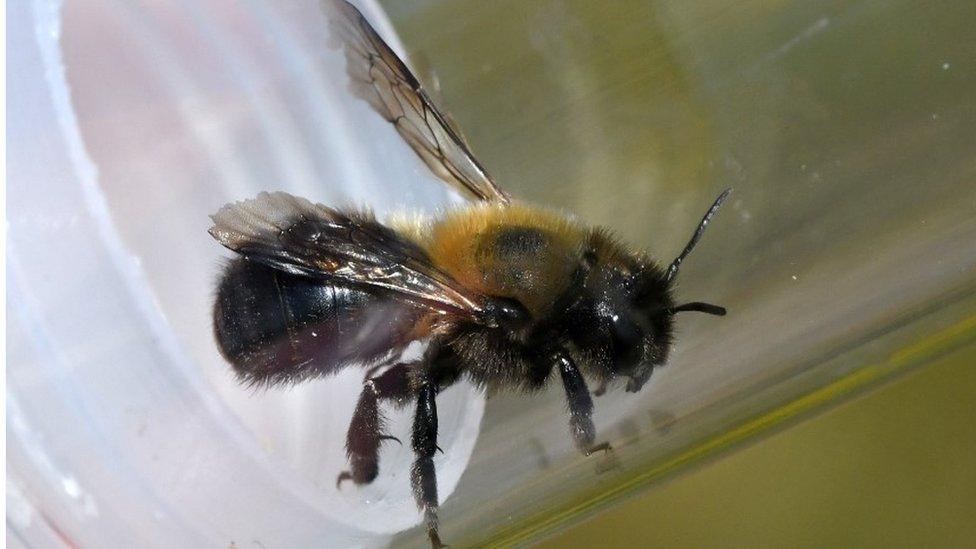
The large mason bee is one of Wales' most threatened species
Bees feed on pollen and nectar from flowers - meaning the changing landscape affects where they thrive.
"Where many people see the lovely green rolling hills and fields, bees see nature-depleted bowling greens with no flowers in sight," said Sinead Lynch, from the Bumblebee Conservation Trust.
"This is why sites like coal tips, which have been left to naturally re-vegetate and left undistributed for many decades, have become such havens for wildlife."
The UK has lost 97% of its wildflower meadows since the 1930s, so coastal grasslands, dunes and even man-made brownfield sites are becoming increasingly important hotspots.
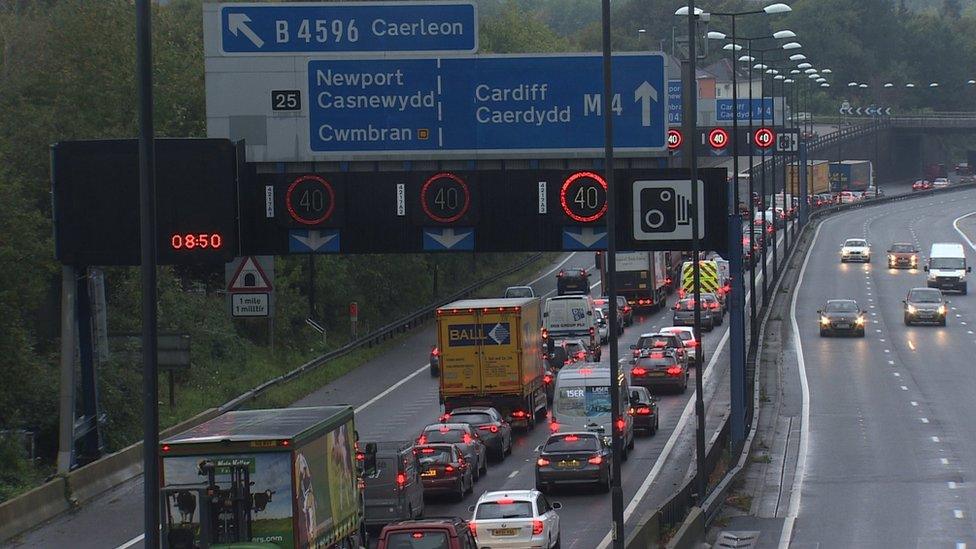
A £1.6bn M4 relief road around Newport was scrapped on grounds of cost and its impact on the environment
Ms Lynch said the greatest decline in the range of bumblebees came in the middle of last century because of changes in agriculture.
Species are now "restricted to small populations" and "increasingly vulnerable to a range of threats".
And she said these concerns were the reasons the Welsh Government's decision to scrap the M4 relief road was applauded by conservationists.
"That development severely threatened the population of Wales' rarest bumblebee, the shrill carder bee on the Gwent Levels," Ms Lynch said.
"It must be said, though, that there are some winners when it comes to threats like climate change.
"We're seeing new species coming into the UK such as the tree bumblebee and ivy bee, which, unlike most species, have been increasing in range across Europe and seem better adapted to urban areas."
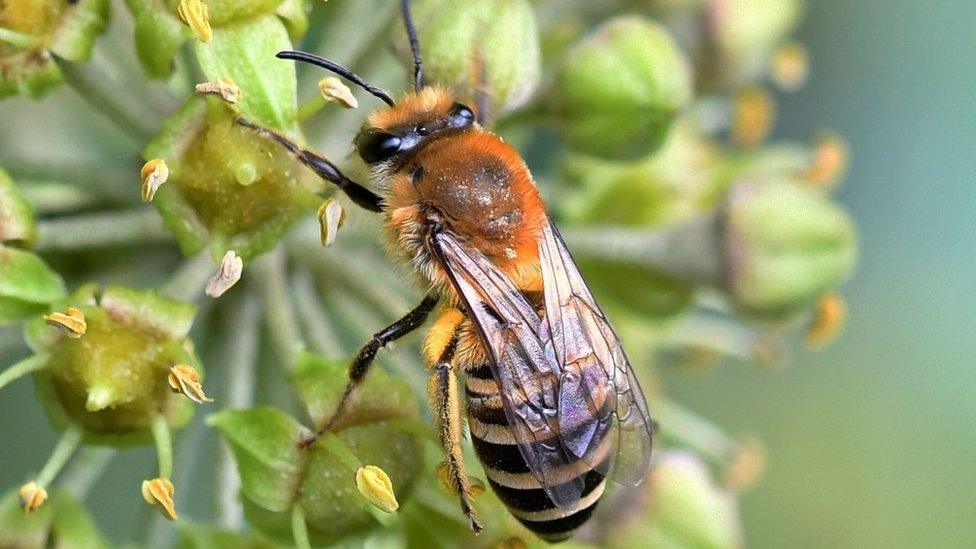
The ivy bee was first recorded in the UK in 2002 and feeds off nectar from ivy flowers in autumn
Wales' 180 types of bees are "a diverse group", according to Buglife Cymru conservation officer Liam Olds.
He said: "Our 19 species of bumblebee, like honeybees, are social and live in colonies where there is a fertile queen and virgin female workers.
"Workers collect pollen wet, mixing it with saliva and then transferring it to their hind legs to pack into their 'pollen baskets' to transport back to the nest."
It is a lonelier existence for solitary bees, and without workers, they do their own foraging and nest building.
They also collect pollen differently - using a special brush.
"Sometimes solitary bees nest in large numbers where nesting conditions are suitable giving the impression they are social bees," Mr Olds added.
"But they aren't."
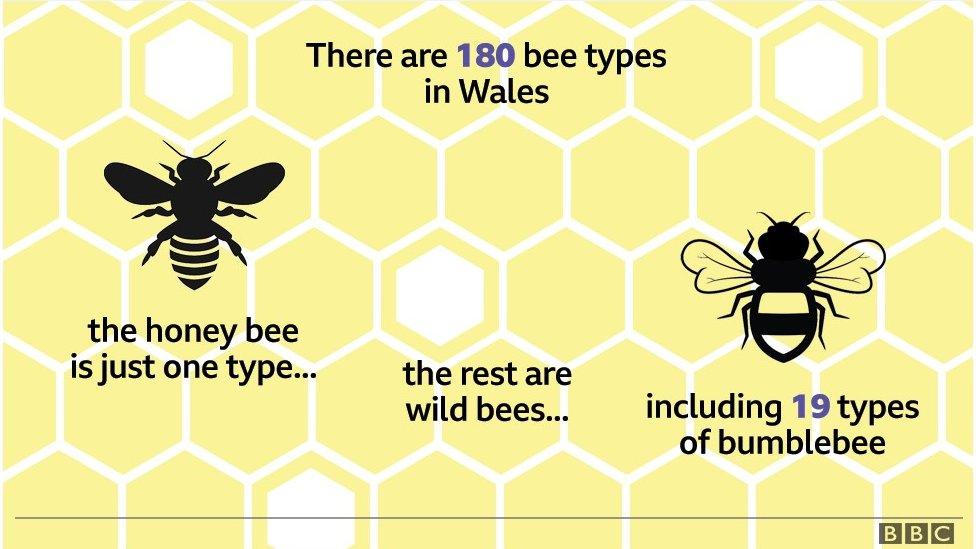
They usually set up home on bare ground, holes in deadwood and in hollow plant stems while bumblebees nest in areas such as long grass or small mammal burrows.
Some are innovative, such as the red-tailed mason bee which nests in abandoned snail shells.
The leafcutter bee does what its name suggests, cutting sections of leaves to line its nest.
How can I help bees to thrive?
A decline has been blamed on climate change, with bees emerging before flowers, pesticide use, pollution and disease spread by commercial honey bees and bumblebees.
To help them thrive, Mr Olds suggested homeowners could drill holes in pieces of wood or mow lawns less.
He added: "This will give plants such as dandelions, one of the most important plants for bees and other pollinating insects, an opportunity to flower.
"And generally, don't be too tidy in your garden… nature doesn't do tidy."
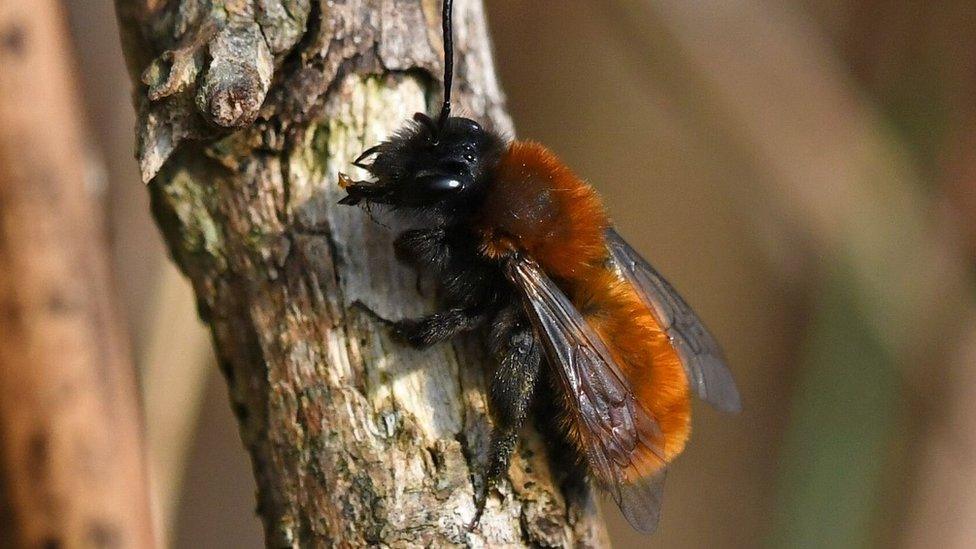
The tawny mining bee is one of the most common solitary bees to be found in gardens
One threatened species, the bilberry bumblebee, has found a sanctuary in the flower-rich old colliery spoil sites of the Rhondda.
To help preserve them, local AM Leanne Wood was made species champion in the Senedd, something she called a "fantastic idea".
"It has helped raise awareness of rare species and the environments they need," she said.
"The learning involved will hopefully help to bring about strong public and government support for us to preserve and create the habitats and conditions for these wonderful creatures to not just survive, but thrive."
- Published20 October 2019
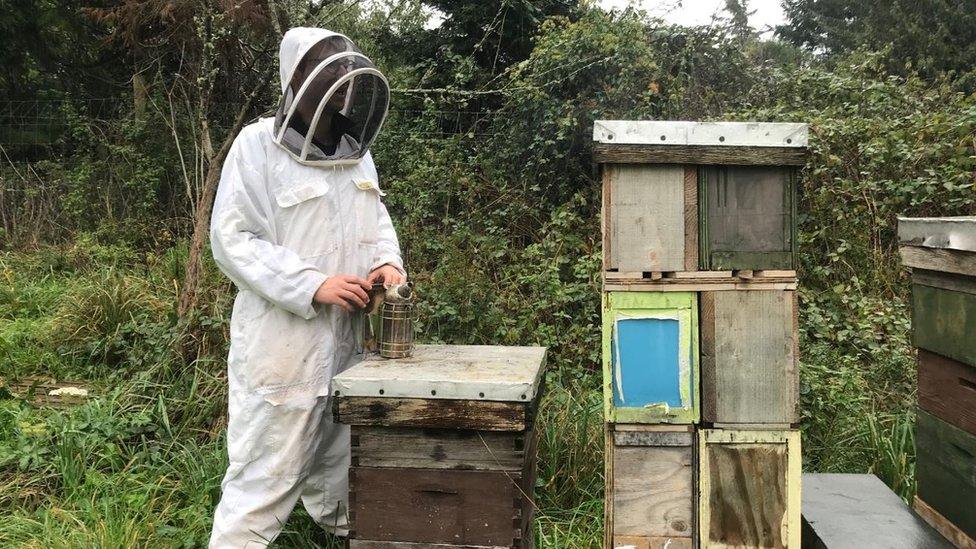
- Published10 June 2019
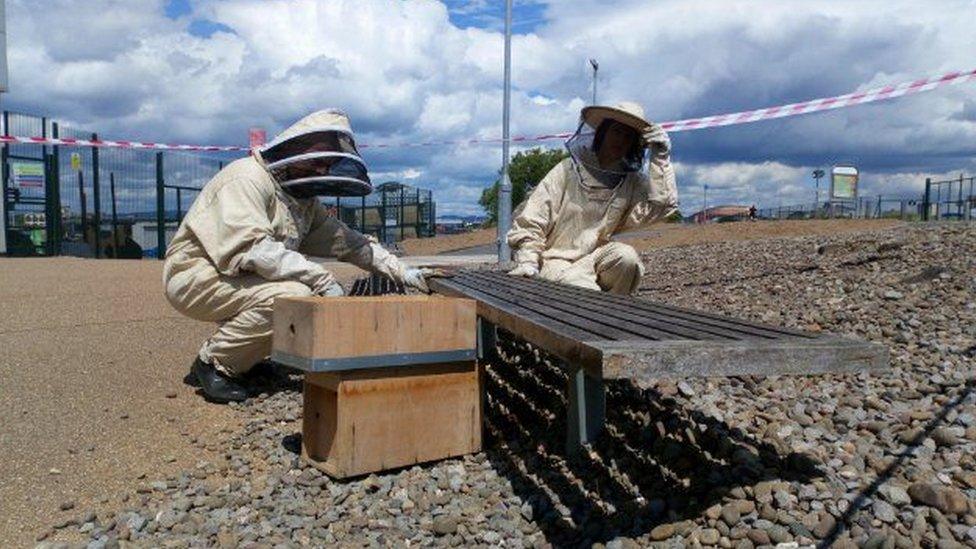
- Published24 April 2019
